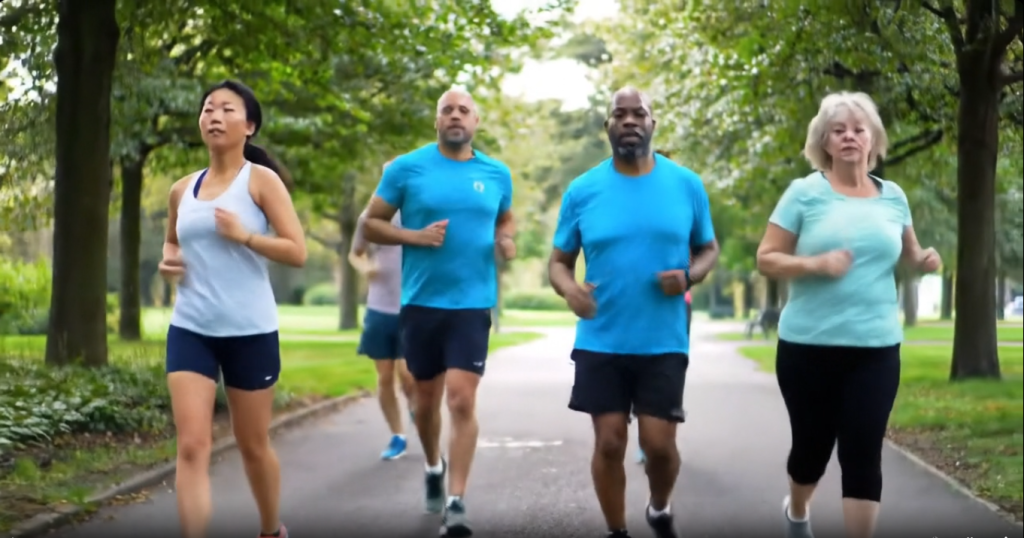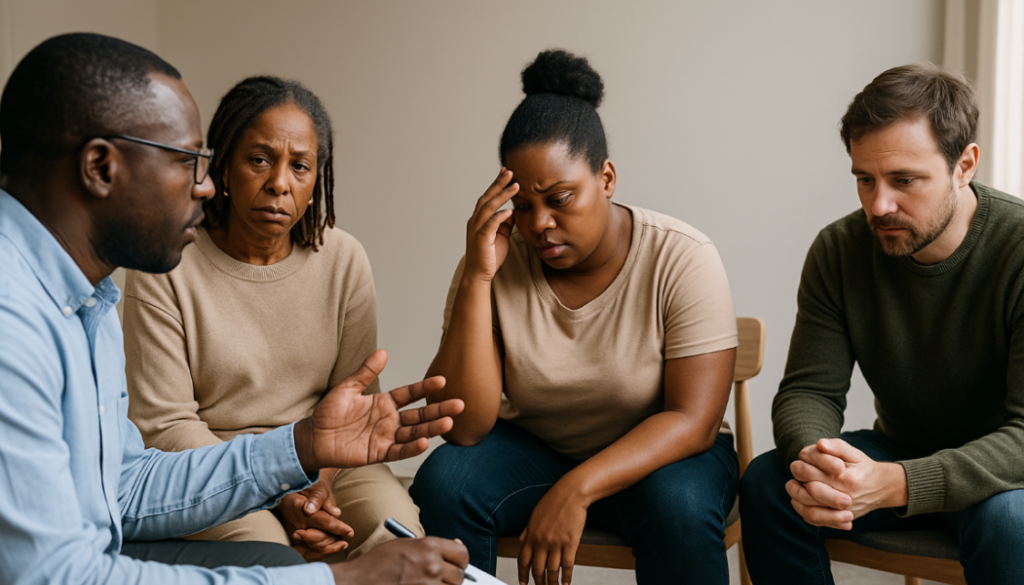
“When do you get time to rest?” I asked Stephen during a recent appointment, after he described weeks of pounding headaches and restless nights. He sighed and said, “I’ll sleep when I’m dead. The hustle can’t stop.” Behind his screen-lit eyes was more than fatigue—it was classic digital burnout in a generation that never logs off but urgently needs lessons in managing stress.
For many millennials and Gen Zers, that mindset isn’t edgy, but it’s reality. We’re living in a world that runs 24/7, where work-life boundaries are blurry, and the constant ping of notifications makes it feel like we can never truly log off. Burnout isn’t a rare visitor anymore; in fact, it’s become a roommate.
And the stats back it up. According to the World Health Organization (WHO), stress-related mental health conditions are rising globally, particularly among young adults aged 18–35. World Health Organization.
The American Psychological Association (APA) reports that 60% of Gen Z and 50% of millennials feel stressed “most or all of the time,” with work, finances, and social media topping the list of causes. American Psychological Association
Add the gig economy into the mix—where flexibility comes with instability—and it’s no wonder burnout is on the rise.
But while burnout may be a universal experience, how we go about managing stress is anything but one-size-fits-all. Culture, context, and community all shape the way we respond—and recover. So let’s explore both the chaos and the calm that are possible, wherever you are in the world.
Managing Stress: What Are The Triggers?
Here are 15 common causes of stress in the always-on generation, each a piece of the puzzle and necessitating the need for managing stress in our high-pressure world:
- Work Overload: Juggling endless tasks and tight deadlines feels like running on a hamster wheel. Example: Staying up past midnight to finish a project. A survey by Reed revealed that 85% of workers have experienced burnout, with 91% of 18- to 24-year-olds reporting symptoms such as fatigue and headaches. (The Times)
- Technology Overload: Constant notifications fracture focus and hijack downtime. Example: Checking 100+ emails during a “break.”
- Financial Pressures: Rising costs and student debt loom large, creating constant worry. Example: Stressing over rent while bills pile up.
- Social Media Comparison: Curated feeds fuel feelings of inadequacy. Example: Feeling “behind” after seeing a peer’s vacation post.
- Sleep Deprivation: Late-night scrolling or stress disrupts rest, amplifying tension. Example: Getting only five hours of sleep before a big day.
- Relationship Struggles: Conflicts with partners, friends, or family weigh heavily. Example: A heated argument with a roommate.
- Uncertainty About the Future: Job insecurity or global crises spark anxiety. Example: Fearing layoffs in an unstable economy.
- Pursuing Perfectionism: Unrealistic self-expectations create pressure to be flawless. Example: Obsessing over a “perfect” presentation.
These triggers aren’t just annoyances—they chip away at your well-being. Recognizing them is the first step in managing stress and reclaiming your sense of balance.
Warning Signs You Need to Start Managing Stress
Left unchecked, chronic stress takes a toll;
Physically, it can cause headaches, fatigue, digestive issues, and a weakened immune system, making you more prone to illness.
Mentally, it fuels anxiety, depression, and burnout—43% of Gen Z report mental health struggles linked to stress.
Socially, it strains relationships; you might snap at a friend or withdraw from loved ones.
Professionally, it tanks productivity, with 50% of workers saying stress reduces their focus.
The stakes are high, but the solution isn’t out of reach. With the right tools, surely you can start managing stress to protect your health.
Science-Backed Strategies For Managing Stress

Managing Stress With Balanced Eat
The Mediterranean diet (hello, omega-3s) supports brain health. South Asian traditions use turmeric and ginger for gut balance—your second brain. Read also: Best Foods for Glowing Skin and Natural Anti-Aging
Managing Stress With Mindfulness Practices
Meditation or deep breathing calms the mind. Tip: Try a 5-minute guided meditation on apps like Headspace.
Managing Stress With Setting Digital Boundaries
Designate tech-free hours to reclaim focus. Tip: Silence notifications after 8 PM or use “Do Not Disturb” mode.
Managing Stress With Sleep Prioritization
A consistent sleep schedule boosts resilience. Tip: Aim for 7–8 hours and avoid screens 30 minutes before bed. Benefits of Good Sleep
Managing Stress With Regular Exercise
Physical activity releases endorphins, consequently lifting mood. Tip: Take a 30-minute walk or try online yoga classes.

Effective Time Management
Organize tasks to reduce chaos. Tip: Use a planner app like Todoist to schedule work, rest, and hobbies.
Adequate Social Support
Connection eases stress. Tip: Schedule weekly coffee chats or join a local hobby group.
Managing Stress With Controlled Social Media Exposure
Manage feeds to avoid comparison traps. Tip: Unfollow accounts that spark negativity or envy.
Managing Stress With Gratitude Practices
Focusing on positives shifts perspective. Tip: Write three things you’re thankful for daily in a journal.
Efficient Task Management
Breaking big projects into manageable steps and tackling them in small chunks helps to reduce stress. Tip: Outline a work project before diving into details.
Setting Strong Boundaries
Boundaries prevent overcommitment. Tip: Politely decline extra tasks when your plate is full.
Managing Stress With Enjoyable Hobbies
Creative outlets recharge you greatly. Tip: Try painting, cooking, or gardening for 20 minutes a week.

Self-Compassion Practices
Embrace imperfections with kindness. Tip: Replace self-criticism with affirmations like “I’m doing my best.”
Seeking Professional Help
After all is said and done, seek professional therapists who offer tailored coping tools. Tip: Explore online platforms like BetterHelp for accessible support.
Embracing Cultural Tools for Managing Stress
Every culture has its own time-tested ways of finding peace. Let’s borrow (and adapt) them.
- Mindfulness & Meditation (India, Thailand, Japan): Now easily accessible through apps like Insight Timer.
- Ubuntu Check-ins (South Africa): Community-based care—think regular wellness conversations with friends or coworkers.
- Forest Bathing (Japan): No forest nearby? Try sitting in a park or tending to your plants.
- Dance Therapy (West Africa): Rhythmic movement reduces cortisol—plus, it’s fun!
- Sobremesa (Latin America): A mindful moment of conversation after meals—no rushing, no scrolling.
Many of these can be practiced anywhere. It’s not about doing them perfectly—it’s about doing what feels right for you.
Here’s the challenge: not every culture openly talks about mental health.
In some Middle Eastern or Asian communities, stress and burnout may be seen as personal failures. Therapy is still taboo in many places. But change is happening—especially among Gen Z.
In Africa, advocates are reframing wellness as community strength. Latin American thinkers are pushing for “bienestar” (well-being) as a basic right. And across continents, young people are using TikTok, podcasts, and Twitter to normalize mental health conversations.
Let’s be clear: self-care isn’t selfish—it’s a necessity. And taking care of yourself is the first step to showing up for others.
Your Personal Calm-in-Chaos Toolkit
Looking for something that actually fits into your life? Here’s a flexible, cross-cultural daily plan:
Morning
- 5-minute meditation or prayer.
- Herbal tea with lemon and ginger, or calming rooibos.
Midday
- Write down one thing you’re grateful for.
- Tech-free lunch—maybe even a sobremesa-style chat with a friend or colleague.
Evening
- Gentle movement: a short walk, yoga, or your favorite dance track.
- Screen-free hour with deep breathing, soft music, or reading.
Frequently Asked Questions
- Why is stress more common in the always-on generation?
The always-on generation is constantly connected to work, social media, and news updates, leaving little time for rest or mental recharge. This 24/7 connectivity increases mental overload and stress levels.
- What are the early signs of stress I should watch out for?
Common early signs include fatigue, irritability, headaches, difficulty sleeping, trouble concentrating, and feeling overwhelmed or anxious most of the time.
- How can I manage stress while still being productive?
Set clear boundaries for work and screen time, prioritize important tasks, take regular breaks, and practice relaxation techniques like deep breathing or mindfulness meditation.
- Does a digital detox really help with stress?
Yes. Taking short or scheduled breaks from social media and digital devices allows your brain to rest, improves focus, and reduces anxiety caused by constant notifications.
- What quick daily habits can reduce stress?
Simple habits like starting your day with 5–10 minutes of meditation, getting at least 30 minutes of exercise, staying hydrated, journaling, and going to bed early can significantly lower stress levels.
Final Thoughts
You don’t need a mountain or fancy retreat to find peace. Whether you’re a student in Nairobi, a freelancer in Bogotá, or a coder in Seoul—calm is available to you in small, intentional steps.
So here’s your challenge: Try one stress management technique this week. Reflect on how it feels. Explore these free resources to support your journey:
- WHO Mental Health Guides
- Headspace Free Meditations
- Insight Timer—Free Mindfulness App
- Mind HK (Hong Kong)
- Beyond Blue (Australia)
Subscribe to our newsletter for more health tips, share this post with others and join our free WhatsApp or Facebook support group. Explore more resources at HealthsClinic.com.
Your health is your wealth—prioritize it today!
This post is for educational purposes only; therefore, consult your doctor before making any medical decisions.
Kindly Subscribe, Like and Share this post.
Related Reading
RELATED POSTS
View all


